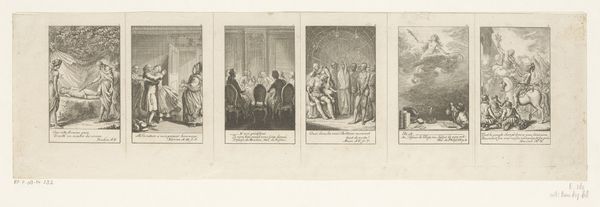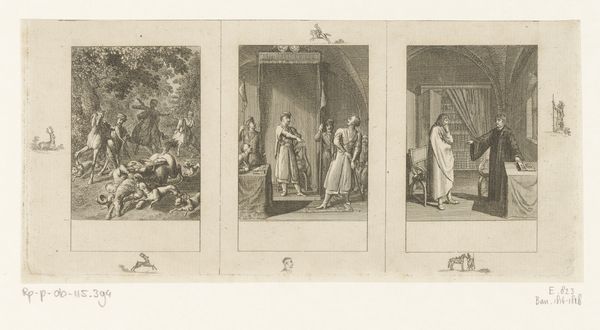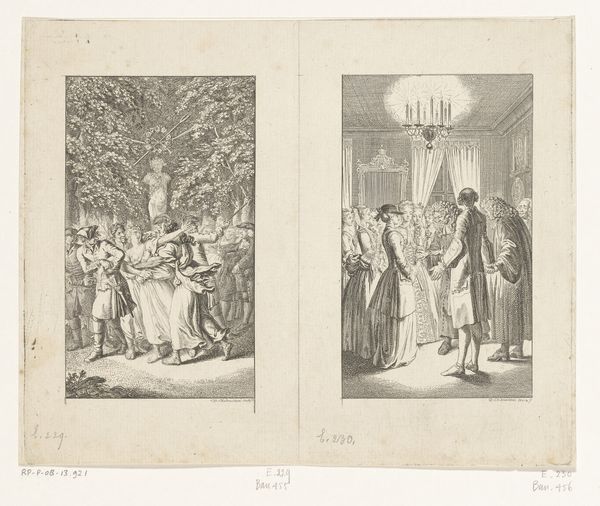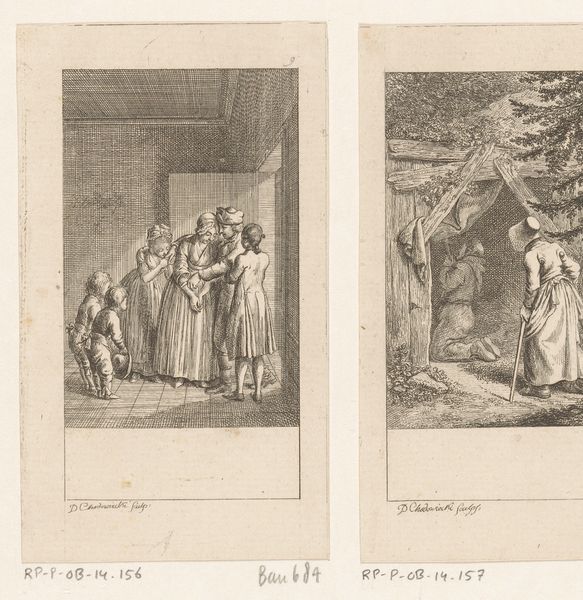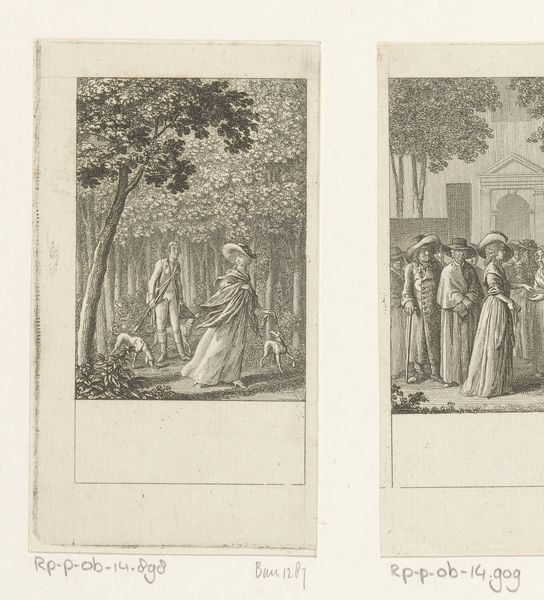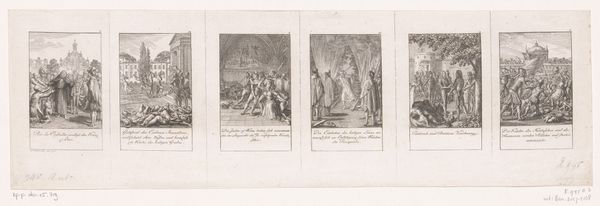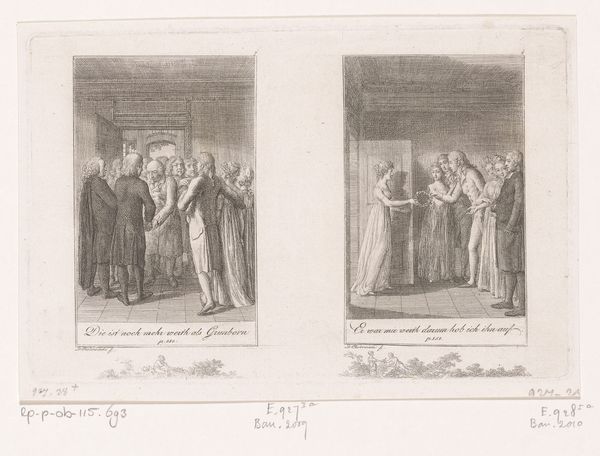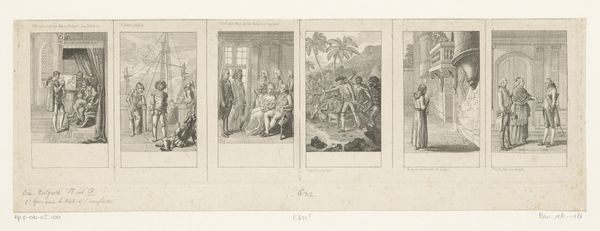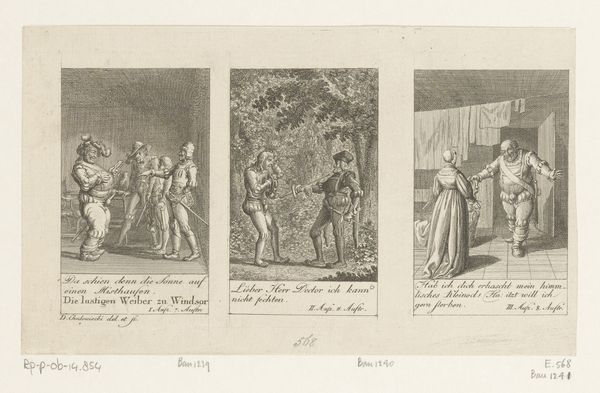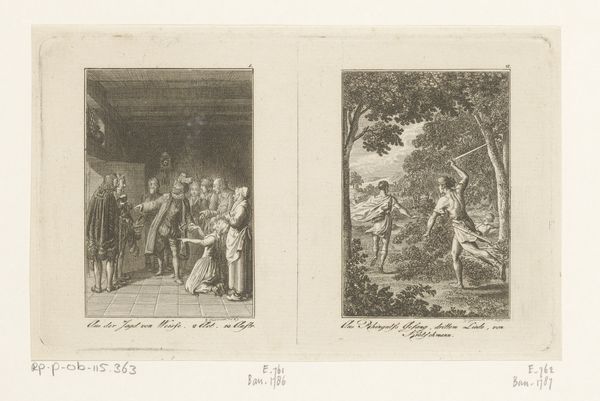
Dimensions: height 109 mm, width 383 mm
Copyright: Rijks Museum: Open Domain
Editor: So, this is Daniel Nikolaus Chodowiecki's "Zes voorstellingen uit de huwelijksgeschiedenis," made in 1795. It’s an etching, almost like a storyboard about marriage. It feels incredibly detailed, but also distant, somehow. What jumps out at you about it? Curator: The medium itself – etching – is so crucial here. Think about the process. The artist painstakingly uses tools to carve lines into a metal plate, repeating a process which historically enabled the mass distribution of imagery. The subject is also telling: "Scenes from a Marriage," made reproducible for a potentially large, consuming audience. Does that mass production impact how we view the scenes themselves? Editor: I hadn't thought about it that way, it does almost seem more cynical when considering that element, like this used to create multiple copies from a singular, reproducible process. Like it's less a comment on that particular couples life but a generalized version made into multiples. Curator: Exactly! And notice how Chodowiecki breaks from established high art traditions through printmaking – a traditionally 'lower' artform due to its association with utility and reproduction. This choice blurs the line between social commentary, commodity, and "art." Think about the audience he’s likely trying to reach and sell to: would they be critical of the institution of marriage? Editor: That’s fascinating! So, the value isn't necessarily in its uniqueness, like a painting, but in its accessibility and the message it spreads. What can the labor itself reveal? Curator: Consider the labour, too. Think about how much cheaper these reproduced images are versus oil paints or portraiture, so they can appeal to a very broad audience and a broad critique. Editor: Right, it brings the societal ritual of marriage, along with any related commentary to a mass audience instead of a singular wealthy patron. Thank you, it’s really interesting to consider art's value outside just its aesthetic or even symbolic properties, but how it participates within the material world and what choices are available to the artist and how they might even be reacting to or against norms of the time. Curator: Precisely. It's a lens onto production, consumption, and how these interact to give the artwork its total meaning, beyond just the visual.
Comments
No comments
Be the first to comment and join the conversation on the ultimate creative platform.


